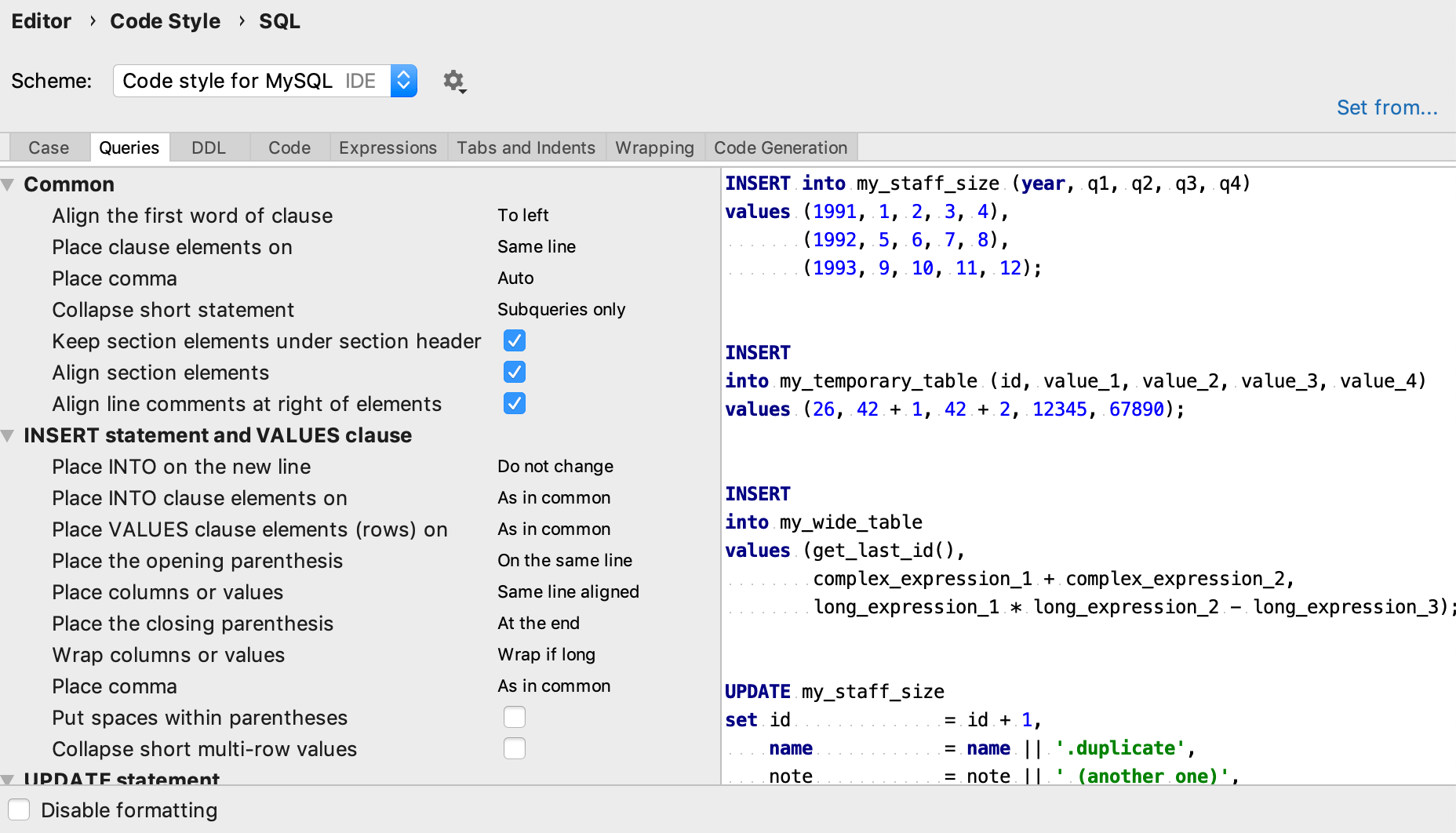

Refactorings that work in SQL files and schemas - DataGrip correctly resolves all references in your SQL code and helps you refactor them.It will immediately let you know about unresolved objects, using keywords as identifiers and always offers the way to fix problems. On-the-fly analysis and quick-fixes - DataGrip detects probable bugs in your code and suggests the best options to fix them on the fly.Completion is aware of the tables structure, foreign keys, and even database objects created in code you're editing. Smart code completion - DataGrip provides context-sensitive code completion, helping you to write SQL code faster.Explain plan - Gives you an extended insight into how your queries work and into database engine behavior so you can make your queries more efficient.Efficient schema navigation - Lets you jump to any table, view, or procedure by its name via corresponding action, or directly from its usages in the SQL code.Intelligent query console - Allows you to execute queries in different modes and provides local history that keeps track of all your activity and protects you from losing your work.Extra This contains some extra variant data like (` Using index`, `Using where`.) which shows how the filtering and data picking is going to happen.if you multiply this with rows you will get how many rows this query will return to preceding queries. Filtered The percentage of rows that will be filtered by using where conditions or things like that.Rows The number of rows MySQL estimate it will need to read to find the desired row.Ref This shows which columns or constants are being used to lookup values in the index name in the key column.based on this value you can either play with your query to reduce the effect or change the structure of your tables to a better one if you weren't using the allocated bytes in your table. Key_len The number of bytes MySql will use in the index.Key The one index that MySQL decided to use to optimize the access of the wanted data.Possible Keys This will try to take all the columns used in the query and use them as possible columns to filter upon or use for execution.Type Some say its called access_type, and those types are: - ALL: find data in the table through normal scan (normal select queries) - index: find data through an indexed column (nice to be this way) - range: meaning it can limit the results based on the indexed column and take a range (fast query) - ref: meaning this will match a ref from other tables - eq_ref: if the ref to a unique key, meaning it will stop the moment it matches a row - const, system: matches a const (very fast usually).usually, its always like that for join commands. Table This will refer to the table it's getting the data from for current query, sometimes it says instead of the table name meaning that this join will wait for its internal command id=4 as a table to get data from.select * from - Union: join, union or such commands - Union Result: the place where it joins the results of all joins. (select actor_id, as something from the table) - Derived: ex. Select Type As for this, It could have one of the following values (the is the focus): - SubQuery: ex.but, if you have a joined query and a subquery you will notice it will show you main query then subquery 2nd then the join 3rd. if you have a normal query you will see only 1. ID This id will represent the id of the statement MySQL is going to execute in order.Now let's explain whats inside that table.


 0 kommentar(er)
0 kommentar(er)
